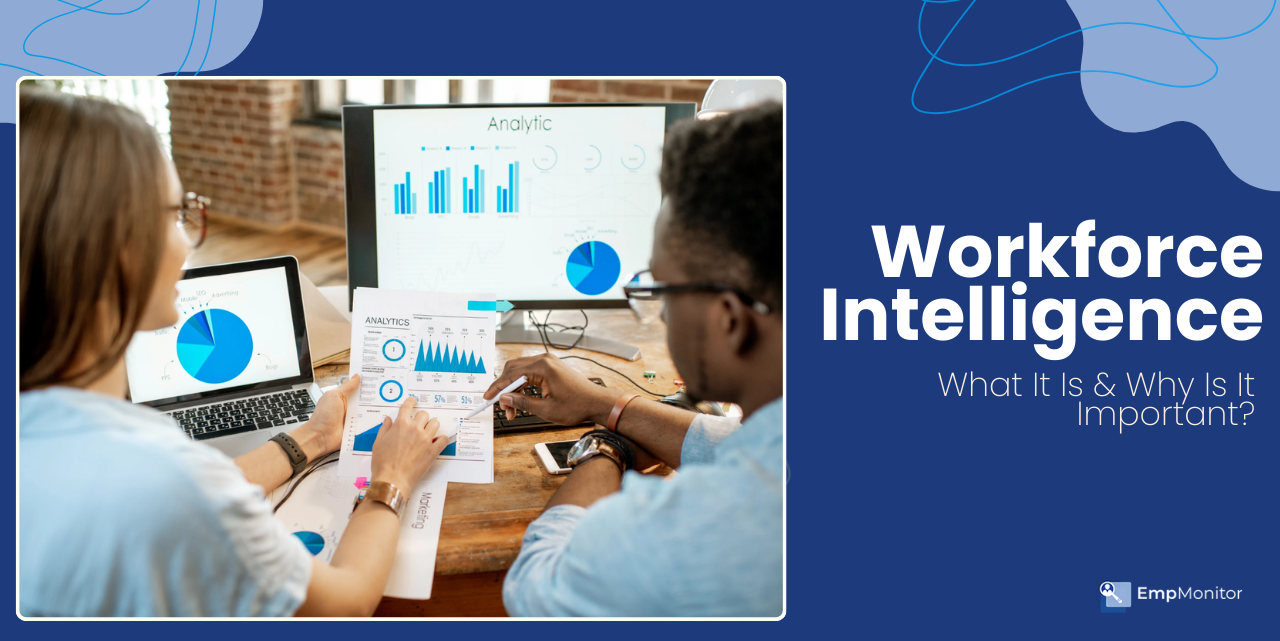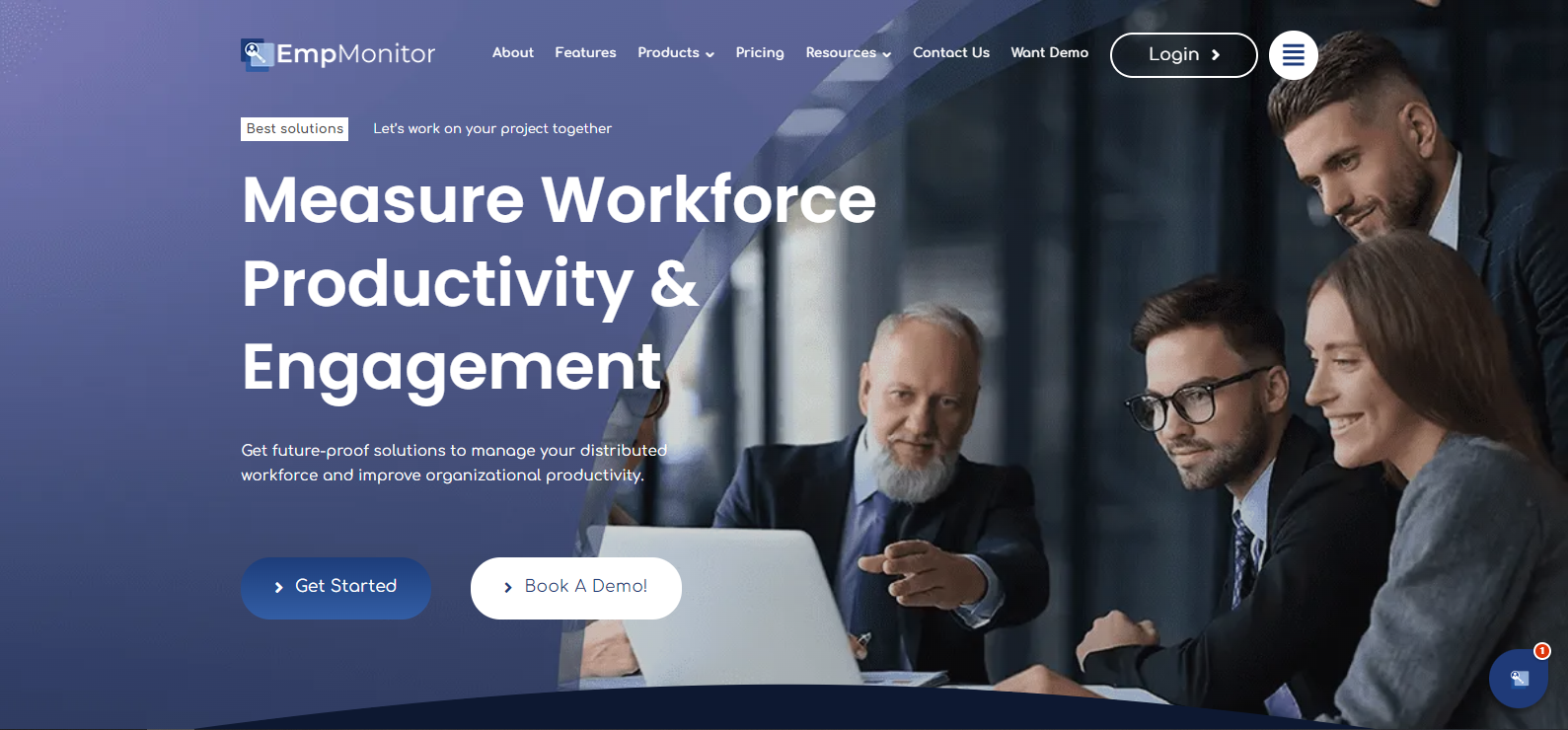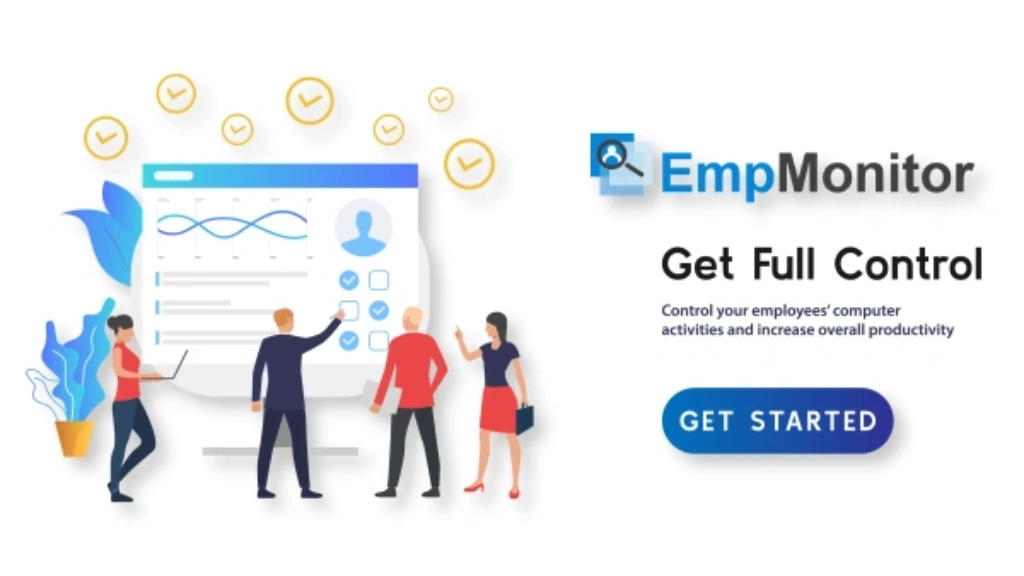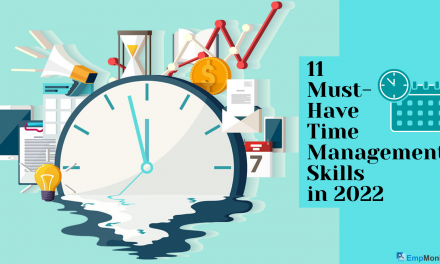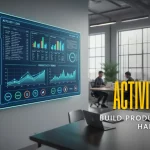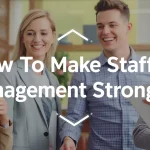Every decision you make as a manager impacts productivity, employee engagement, and overall business success. But are you making these decisions with the right insights? Workforce intelligence helps you move beyond guesswork by analyzing real-time data on employee performance, work patterns, and operational efficiency. Without it, blind spots in productivity, resource allocation, and team management can cost your business valuable time and money.
In today’s fast-paced work environment, relying on outdated reporting methods isn’t enough. Workforce insight or intelligence gives you a clear view of how teams operate, where inefficiencies exist, and how to optimize performance. By leveraging data-driven insights, businesses can improve decision-making, enhance workforce planning, and stay ahead of operational challenges.
Let’s explore why this is essential for long-term success.
Hit ‘Play’ Button & Tune Into The Blog!
What Is Workforce Intelligence?
Managing a workforce today is more complex than ever. Employees expect transparency, career growth, and meaningful work, while organizations struggle to optimize performance, retain talent, and plan for the future. Traditional HR methods often fall short, making it difficult for managers to make informed decisions. This is where workforce or workplace intelligence comes in.
It is the practice of gathering and analyzing employee data—such as skills, productivity levels, work patterns, and career progress—to improve workforce planning and decision-making. It uses AI-driven analytics to provide real-time insights into talent distribution, skill gaps, and employee engagement, helping organizations align their workforce strategies with business goals.
For example, if a company struggles with high turnover, workforce intelligence software can identify patterns in employee exits, highlight areas of dissatisfaction, and suggest proactive solutions to improve retention. Tools like EmpMonitor– a comprehensive workforce management tool gives deep workforce insights, allowing managers to optimize team performance, track productivity, and ensure employees are in roles where they can excel.
By replacing assumptions with data-backed insights, workplace insights enable businesses to make strategic decisions that enhance productivity, improve talent management, and future-proof their workforce.
Why Workforce Intelligence Is Important?
Organizations must be agile to stay competitive. Traditional talent management strategies often fall short because they lack real-time insights into workforce capabilities. It is where workforce insights become essential. It clearly shows employee skills, gaps, and growth potential, helping make better hiring, training, and retention decisions.
1. Workforce Insights Enhances Agility and Competitiveness
Businesses that adopt a data-driven approach can quickly adapt to industry changes. By analyzing current workforce capabilities and identifying future skill needs, leaders can build teams ready for upcoming challenges. This strategic advantage helps organizations stay ahead of competitors by ensuring they always have the right talent in place.
2. Smarter Hiring with Workforce Intelligence
Hiring the right talent is one of the crucial challenges managers face. Workforce insights streamline recruitment by analyzing skills data from past hires, candidate applications, and interview feedback. It helps hiring managers make informed decisions, ensuring they bring in candidates who fit the role and align with long-term business goals.
With artificial intelligence in the workforce, organizations can automate talent matching, reduce hiring bias, and improve the overall quality of hires. AI-powered insights enable recruiters to identify high-potential candidates faster, reducing time-to-fill and hiring costs.
3. Workforce Insights Empowers Employee Growth and Retention
Employee engagement and retention improve when organizations offer career growth opportunities. Workforce intelligence maps out skill development paths, helping employees take control of their careers while aligning their growth with company objectives. It leads to better job satisfaction, reduced turnover, and a more motivated workforce.
4. Data-Driven Workforce Planning
Businesses risk skill shortages or misaligned talent allocation without understanding workforce capabilities. Workplace insights provide predictive insights, allowing HR and leadership teams to plan. Workforce analytics backs every decision with real-time data. Whether restructuring teams, planning succession, or identifying future leaders.
Incorporating workplace intelligence into talent management strategies is no longer optional—it’s a necessity. From sharp hiring to better employee retention and strategic workforce planning, organizations that leverage real-time insights will always have the upper hand. By integrating artificial intelligence into the workforce, businesses can future-proof their teams, improve efficiency, and create a workplace that fosters continuous growth.
How Does Workforce Intelligence Provide Skills Intelligence For Talent Management?
Talent management requires more than just knowing your employees’ job titles. You need proper insights into their ongoing skills, potential gaps, and growth opportunities. Without this data, workforce planning becomes a guessing game, leading to missed opportunities for internal mobility and employee development. Employee insights bridges this gap by providing a structured approach to analyzing and optimizing employee skills.
Organizations can map employee competencies to job roles, career progressions, and business needs with employee insights. All this has been achieved through a skills ontology, which connects employee skills to related skills, job titles, learning resources, and succession plans. Workforce intelligence helps HR teams and managers understand skill adjacency, restructure roles, and guide employees toward their next career.
By leveraging artificial intelligence in the workforce, businesses can automate skills analysis and create logical groupings that enhance workforce planning. Leverage advanced team intelligence to offer real-time insights into employee strengths, development needs, and career aspirations. It allows managers to make informed talent decisions, improve retention, and build future-ready teams.
Integrating workforce insights into talent management ensures that businesses are not just filling positions but strategically developing their workforce for long-term success.
Practical Applications Of Workforce Intelligence
Employee intelligence plays a critical role in optimizing workforce management. By leveraging real-time data, businesses can enhance decision-making in key areas such as hiring, training, and performance evaluation. Below are some of the most impactful use cases:
1. Smarter Recruitment Strategies
Employee insights help employers find the best places to hire, identify top candidates, and predict who will succeed in a job. This data-driven approach streamlines hiring and reduces turnover.
2. Closing Skill Gaps with Targeted Training
Every organization faces skill shortages, but workplace insights identify gaps before they impact productivity. It provides insights into employee strengths and weaknesses, enabling HR teams to design personalized training and development programs that drive growth.
3. Data-Driven Performance Management
Evaluating employee performance goes beyond annual reviews. Workforce Intelligence tracks key performance metrics, identifies areas for improvement, and supports unbiased promotion and reward decisions, ensuring that top talent is recognized and retained.
4. Strategic Workforce Planning
Planning for the future requires more than guesswork. Workplace Intelligence forecasts workforce needs aids succession planning, and helps businesses optimize staffing levels based on anticipated demand. It ensures stability and preparedness for market shifts.
5. Ensuring Compliance and Risk Management
Navigating labor laws and regulations can be complex. Workforce Intelligence automates compliance tracking, ensuring adherence to policies on work hours, break periods, and other legal requirements. It also mitigates risks related to turnover, talent shortages, and regulatory violations.
By integrating workforce management software, businesses gain a competitive edge in managing talent efficiently. Workforce Intelligence transforms raw data into actionable insights, enabling organizations to build a more agile, future-ready workforce.
6. Boosting Employee Engagement
Engaged employees are more productive and less likely to leave. Workforce Intelligence analyzes engagement levels, pinpoints factors affecting morale, and helps organizations implement strategies that improve job satisfaction and retention.
However, workforce management and employee monitoring tools like EmpMonitor are key in providing real-time insights into employee activities, helping businesses track productivity, identify engagement trends, and create a more motivated workforce.
EmpMonitor: All-in-One Workforce Management Solution
EmpMonitor is a powerful workforce management software designed to help businesses monitor employee productivity, track attendance, enhance security, and manage remote teams efficiently. It provides real-time insights into employee activities that help organizations improve efficiency and ensure compliance.
Key Features of EmpMonitor:
- Employee Monitoring & Productivity Tracking
EmpMonitor keeps track of employees’ activities, including websites visited, apps used, and keystrokes recorded. It helps employers identify productive and unproductive behavior, ensuring better time management. - Time Tracking & Attendance Management
The software automatically records employees’ working hours, including login/logout times, breaks, and overtime. It also integrates with facial recognition systems for seamless attendance tracking. - User Activity Monitoring
EmpMonitor provides real-time insights into employee activities. Managers can check which tasks employees are working on, detect idle time, and analyze their performance trends to make data-driven decisions. - Insider Threat Detection & Data Security
EmpMonitor monitors suspicious activities such as unauthorized access, file transfers, or unusual working patterns to prevent data breaches. It helps protect sensitive business information. - IP Blacklisting & Website/App Blocking
Restrict access to unauthorized or non-work-related websites and applications to minimize distractions and security risks. Employers can create blacklists for specific IPs, preventing access to unsafe or unproductive content. - Browser History & Performance Records
Gain visibility into employees’ browsing history to analyze patterns and ensure alignment with company policies. EmpMonitor also keeps a detailed performance record to track individual and team efficiency over time. - Automated Timesheets & Shift Management
Streamline attendance tracking with automated timesheets that log working hours accurately. Manage employee shifts efficiently, reducing scheduling conflicts and ensuring optimized workforce management. - Intelligent Alert Mechanism
Identify potential suspicious activity and receive real-time notifications with customizable alerts. This feature helps organizations proactively detect and mitigate risks before they escalate.
EmpMonitor is an ideal solution for businesses looking to improve employee efficiency, ensure data security, and optimize workforce performance—all from a single platform.
Read More
7 Reasons Why Your Company Needs Workforce Management Tool
Workforce Analytics-Its Types, Benefits & More!
What Is Reskilling And Why Is It Important For Your Future?
Workforce Management Solutions: Everything You Need To Know
How Workplace Insights Drive Impactful Business Results?
How Is Workforce Intelligence Different from Workforce Analytics?
Workforce or employee intelligence and workforce analytics provide valuable insights into employee performance and business operations. However, their approach, scope, and impact set them apart. Understanding these differences is essential for managers and HR leaders looking to make data-driven decisions that optimize workforce management.
1. The Key Difference
Workforce analytics identifies trends and patterns in employee data, such as performance metrics, productivity levels, and engagement scores. It provides a retrospective view, helping organizations understand what has happened.
Workplace insights, on the other hand, go beyond analysis. It combines artificial intelligence in the workforce with predictive modeling to generate actionable insights that drive proactive decision-making. Instead of identifying patterns, workforce intelligence interprets data in real-time, enabling businesses to optimize recruitment, retention, training, and workforce planning.
2. Scope & Application
Workforce analytics typically has a narrow focus, often analyzing areas like employee engagement, turnover rates, or individual productivity. It is beneficial for tracking and benchmarking performance over time.
In contrast, workplace insights take a holistic approach. It integrates multiple data points—employee feedback, career progression, skills development, and organizational goals—to provide a 360-degree view of the workforce. It enables HR teams and business leaders to anticipate talent needs, restructure roles, and align workforce strategy with business objectives.
3. Data and Technology
Workforce analytics relies heavily on structured, quantitative data such as KPIs and productivity metrics. It uses historical data to uncover correlations and trends.
Workforce intelligence incorporates qualitative and quantitative data, leveraging AI-driven tools like EmpMonitor to analyze skills, competencies, and employee aspirations. It adapts to evolving workforce dynamics, offering predictive insights that help businesses stay ahead of challenges.
Conclusion
Workforce Intelligence isn’t just about collecting data—it’s about turning insights into action. By understanding employee behavior, engagement levels, and productivity trends, businesses can make informed decisions that drive efficiency and long-term success.
Whether it’s identifying top-performing employees, improving retention strategies, or optimizing workflows, Workforce Intelligence provides the clarity needed to build a thriving workplace.
A tool like EmpMonitor makes this process even more effective by offering real-time monitoring, detailed analytics, and workforce optimization features. From tracking productivity to enhancing employee engagement, it helps businesses stay proactive rather than reactive.
In today’s fast-evolving work environment, leveraging Workforce Intelligence isn’t just an advantage—it’s for sustainable growth and a more engaged workforce.
Frequently Asked Questions
Q: What Are the Eight Types of Intelligence?
There are eight distinct types of intelligence, each representing different ways individuals process information and excel in various areas:
- Logical-Mathematical Intelligence – Strong reasoning and problem-solving skills.
- Linguistic Intelligence – Proficiency in language, writing, and communication.
- Spatial Intelligence – Ability to visualize and manipulate objects mentally.
- Musical Intelligence – Sensitivity to sounds, rhythms, and melodies.
- Bodily-Kinesthetic Intelligence – Coordination and control over body movements.
- Intrapersonal Intelligence – Deep self-awareness and emotional understanding.
- Interpersonal Intelligence – Strong social skills and ability to connect with others.
- Naturalistic Intelligence – Recognition and appreciation of nature and living things.
Q: What Are the 5Rs of HR?
There’s no single approach to effectively motivating and engaging employees. Managers and leaders must blend hard and soft motivation strategies to foster a positive workplace culture. This concept, known as intelligent motivation, revolves around five key elements: Reasons, Responsibilities, Recognition, Relationships, and Rewards.
Q: What Are the Six Stages of Workforce Planning?
Workforce planning involves a structured approach to aligning talent with business needs. The six key stages include:
- Strategic Direction – Defining organizational goals and workforce priorities.
- Supply Analysis – Assessing current workforce capabilities and availability.
- Demand Analysis – Identifying future workforce needs based on business objectives.
- Gap Analysis – Comparing current workforce supply with future demands.
- Solution Implementation – Developing and executing strategies to address workforce gaps.
- Monitoring Progress – It continually evaluates and refines workforce plans for effectiveness.

